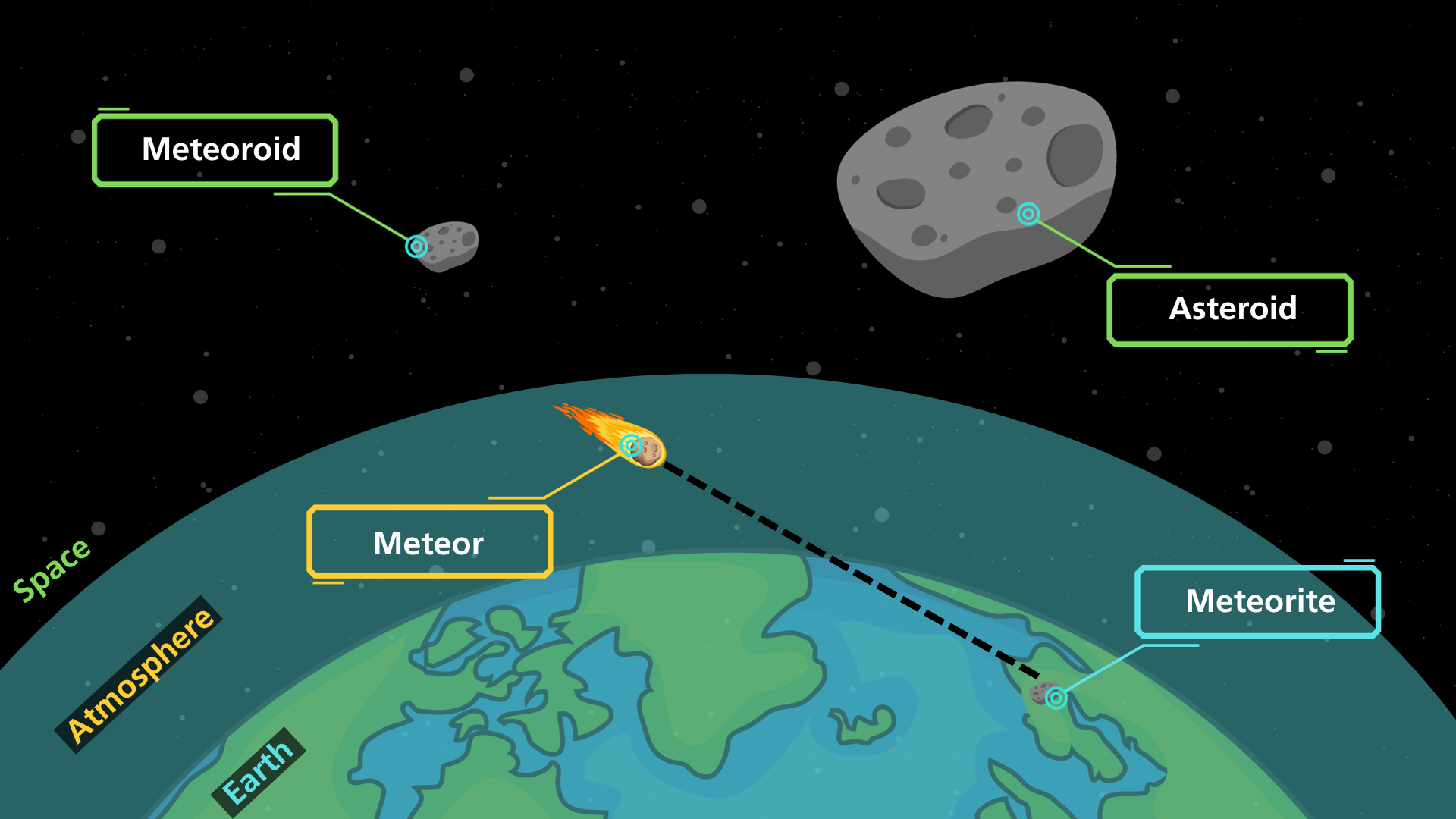Last updated: December 1, 2023
Article
I Didn't Know That!: Shooting Stars

Seeing a shooting star is a magical experience. They have captivated humans for generations. Dozens of cultures assign meaning to shooting stars—from granting wishes to the spiritual representation of souls. Throughout the year, our night skies light up with celestial events, called meteor showers, where countless shooting stars streak across the sky. As you gaze up at the starry show, you might wonder, what are shooting stars and what causes these meteor showers to recur year after year. We’re here to shine some light on these seemingly magical celestial events.
Meteoroids and Meteors and Meteorites—Oh My!

NPS
First let’s define some terms.
Meteoroids are chunks of ice or rock in space ranging in size from a grain of sand to a boulder.
Asteroids are much bigger, from the size of a small house to miles wide.
Meteors (aka shooting stars) occur when meteoroids enter Earth’s atmosphere at high speeds and burn up with a streaking flash of light.
Meteorites are pieces of meteors that don’t burn up during their trip through the atmosphere and hit the ground.

NPS / Jacob W. Frank
Meteor Showers
Meteors streak through our sky on any given night. In fact, NASA scientists estimate that about 48 tons of “meteoritic material” (space debris) falls on Earth every day, with most of it burning up in the atmosphere. While you can catch a lucky glimpse of a meteor any night, the best times to see them are during meteor showers. During a meteor shower, many meteors hit the atmosphere in a short period of time, producing the brilliant trails that we fondly call “shooting stars.”
Meteor showers are predictable and intensify when the Earth’s orbit passes through streams of debris left behind from comets. Meteors in a meteor shower tend to originate from a single point in the sky. Because of this, meteor showers are usually named after a star or constellation that is close to where the meteors appear.
Annual Meteor Showers
Mark your calendars! These meteor showers occur annually and are great opportunities for stargazing. Your ability to clearly see meteor showers is strongly affected by the phase of the moon and the atmospheric conditions, so the viewing conditions can change from year to year. Click on the links in the table below to learn more about these annual meteor showers from our friends at NASA.
|
Major Meteor Showers |
Typical Peak |
Rate of Meteors Per Hour** |
|
Early January |
120 |
|
|
Late April |
18 |
|
|
Early May |
60 |
|
|
Late July |
20 |
|
|
Mid-August |
100 |
|
|
Late October |
22 |
|
|
Mid-November |
15 |
|
|
Mid-December |
120 |
|
|
Ursids |
Late-December |
10 |

What You Can Do
- Mark your calendar for an annual meteor shower listed above.
- Plan a stargazing adventure
- Get an idea of where to stargaze—in your community or in a park
- Get some tips and tricks on how to stargaze in this IDKT!: Stargazing 101
- Become a Junior Ranger Night Explorer
- Discover how to protect night skies at home.
Pass It On!
Did you learn something new? Next time you spot a shooting star, you’ll know the science behind the magic—so, pass it on! Our world is full of wonder, but there’s no way for everyone to be an expert in everything. That’s why sharing knowledge is so important!
Download or screenshot this card to share with a friend as you plan your next stargazing adventure.
Check out other I Didn’t Know That! Topics.
I Didn't Know That! Shooting Stars
-
Shooting stars are not actually stars! What we call a "shooting star" is a streak of light from burning dust of meteors entering Earth's atmosphere at high speeds.
-
48 tons of space debris falls on Earth every day. Fortunately, most burns up in the atmosphere!
-
The best time to see "shooting stars" is during a meteor shower. During a meteor shower, many meteors hit Earth's atmosphere in a short period of time.
-
Mark your calendars for these annual meteor showers:
-
Quadrantids (early January)
-
Eta Aquariids (early May)
-
Perseids (mid-August)
-
Leonids (mid-November)
-
Geminids (mid-December)
-
-
go.nps.gov/idkt
